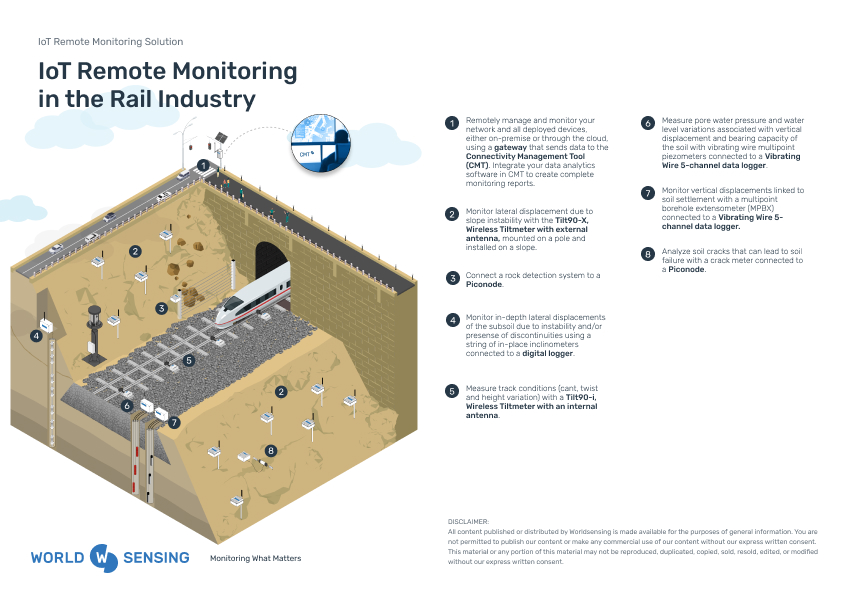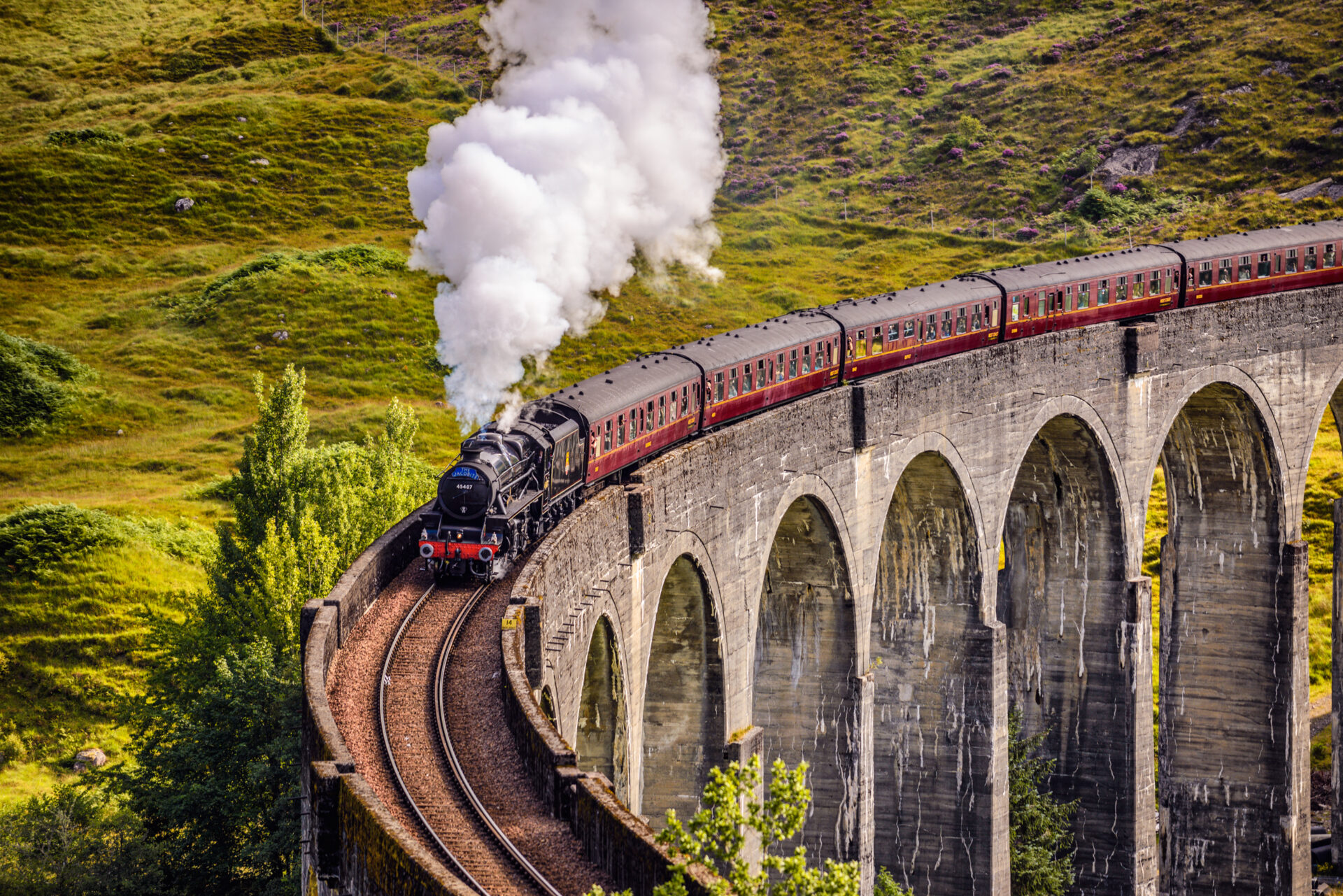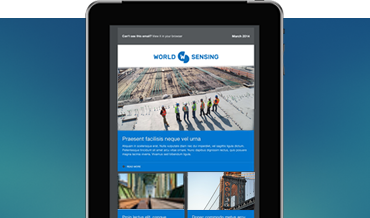How wireless sensor networks can benefit the UK’s upcoming rail buildout
The nation that invented the steam engine is about to get back on track in terms of rail development. And digital technologies could help put the UK at the forefront of rail innovation as the country prepares for one of its biggest infrastructure investments of recent years. On top of the maintenance, renewal and enhancement spend forecast for the current and future Network Rail control periods, plus ongoing investments in the Crossrail 1 and 2 projects, the coming decade will see cash pouring into Northern Powerhouse, linking cities in the north.
But the jewel in the rail crown is High Speed 2 (HS2), which is set to become the UK’s biggest single infrastructure project as it cuts travel times between London, Birmingham, Manchester, the East Midlands and Leeds. In its March 2019 UK rail infrastructure overview, the accounting firm BDO estimated these projects would add up to £200 billion in investment over the coming decade, more than doubling the £80 billion spent in the last 10 years.
Naturally, that was before COVID-19 cast a shadow over the prospects for the UK economy. But there are signs the UK administration will still forge ahead with as much of its rail modernisation programme as possible. September, for example, saw the high-profile start to construction work on HS2, a project that the government says will create 22,000 jobs. With public finances battered by COVID-19 and Brexit, it will be more important than ever for such projects to come in on time and on budget.
Avoiding failures and accidents
And that’s where digital technology could play a significant role. One of the biggest challenges in any major infrastructure project is making sure failures and accidents don’t throw progress off course. On railways, which can stretch over hundreds of miles, knowing about the state of the ground underneath the track is of paramount importance in this respect. Earth movements and slippages can literally derail a project, creating significant delays and costs.
To counter this, project managers rely on geotechnical engineering, which combines soil and rock mechanics to provide a picture of subsurface conditions and materials. The importance of this discipline in rail projects should not be underestimated. According to this study, for example: “Understanding the ground and the specific geotechnical risks it presented was critical for successful delivery of Crossrail, the £14·8 billion project to deliver the Elizabeth line east–west railway across London, UK.”
Geotechnical risks are easy enough to control if the project developer has ample and timely data on ground conditions. But acquiring this data is challenging for several reasons:
- The sensor hardware and software has to be able to cover long distances of track and high densities of sensors in stations, tunnels and critical areas.
- Monitoring can’t be affected by changing environmental conditions such as vegetation growth or nearby constructions.
- Sensor systems need to be able to operate in places that may be difficult to reach and are subject to a high level of vibrations.
- It’s not enough to monitor a single variable; track safety depends on a range of parameters.
- In some areas, monitoring systems may not have access to external power sources.
- Maintenance can be costly and access to sites is not always easy, so it must be reduced to a minimum.
Tracking a wide range of measures
Typically, rail sensor systems pick up ground movements to ensure track stability and geometry, spot subsurface malfunctions and check for hazards in surrounding structures such as embankments, retaining walls and tunnels. But sensor networks can also be adapted to track a range of other measures, such as temperature and humidity. And a new generation of sensor network technologies is adding further benefits into the mix.
Long Range (LoRa) devices and network systems can be integrated with a wide range of sensor protocols and technologies and come with easy-to-use management software. The user interface allows engineers to configure, monitor and trace multiple devices at once. The systems are wireless and reliable, with devices that have been certified by National Rail and come with robust designs featuring internal antennas. Data security extends from the device up to the cloud level.
They can also last up to 10 years in the field on a single battery, or can be powered by wind or solar kits. Edge and cloud computing connectivity management options are also available depending on the preferred proximity to the data storage. This simplicity, scalability and reliability makes LoRa the technology of choice for engineering service providers, and can lead to significant savings compared to manual monitoring or cable-based systems.
Engineering companies are waking up to these benefits and increasingly winning bids based on the capabilities of LoRa end-to-end systems. And the value of LoRa sensor networks does not stop once the railway line has entered operation. The problems that can affect construction projects, such as rock falls or lack of vertical track alignment, are perhaps even more serious when they take place on operational railways.

through a network of wireless dataloggers connected to a gateway.
Improving passenger safety
This fact was tragically brought home in August 2020 when a train derailed in Aberdeenshire after hitting a landslide caused by heavy rain. Three people were killed in the accident. The good news is that if LoRa networks are installed along the track during the construction of new railways such as HS2, then they can form the basis for early warning systems that can improve passenger safety after the rail services enter operation.
In the future, for example, such systems might be able to alert train operators to changes in rail conditions that could indicate the presence of a hazard on the track. They could also help maintenance teams to pinpoint areas of track that could be in danger of failing, so preventive maintenance can be carried out well in advance of an incident.
As well as improving passenger safety, such systems could also greatly improve rail efficiency while reducing costs. Sensor-based condition and failure monitoring, for example, could allow engineering teams to focus just on the sections of track that really need attention, without having to curtail services for routine maintenance that might not be needed.
Accommodating a wide range of sensors
Condition monitoring systems can collect track data every 30 minutes or so and provide early warning of physical problems such as debris on the track communications interference problems such as a broken antenna on a device. Sensor systems can measure cant (the difference in elevation between inner and outer rails) and twist (the cant gradient over a length of railway) on the track, which might indicate dangerous instabilities, rockfalls, cracks, settlements or pore water pressure variations.
LoRa network platforms such as Worldsensing’s wireless monitoring system are perfectly placed to provide such services as they can accommodate a growing range of sensor types and technologies. In addition, LoRa is an established industry standard that is expected to last well into the future.
Globally, the Worldsensing platform has already been used in major projects such as the Hieflau Tunnel in Austria, the U5 Metro Line in Germany, Roslagsbanan Railway in Sweden, the Purple Line Rail Link in the US and the Auckland City Rail Link in New Zealand. In the UK, it has helped improve safety on projects including HS1 and Crossrail. It has also been certified for use on the HS2 project. Now all that’s needed is to get sensors in the ground.

